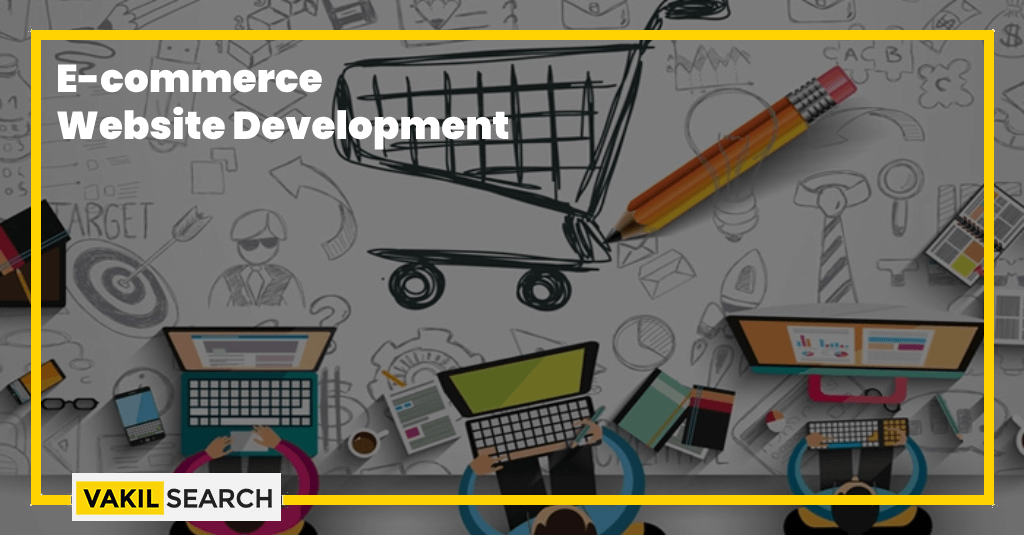An e-commerce website lets people buy and sell items and services online, replacing the need for physical stores. This site handles orders, payments, shipping, and customer support.
Overview:
E-commerce website development is the procedure of building the technical aspects of an e-commerce website. This involves a shopping cart, product pages, order forms, wish lists, and support pages.
An attractive e-commerce website does not just look visually alluring. If it is developed properly, it will translate into real profits and sales for your business by helping to streamline the order procedure for consumers and generating brand equity that can help to carry your business ahead.
What is Ecommerce Website Development?
E-commerce website development refers to the crafting and establishment of digital platforms that empower enterprises to market and trade their offerings online. This activity is centred around forming an accessible and intuitive interface, ensuring trustworthy financial transactions, displaying product assortments effectively, and infusing features that enrich the user’s online shopping experience.
The development covers:
- Web Design: Shaping an engaging digital appearance.
- Product Display: Curating and detailing a systematic product list.
- Transaction Ease: Incorporating a user-friendly purchasing system.
- Payment Solutions: Embedding reliable payment mechanisms.
- Digital Safety: Prioritising and integrating robust platform security.
- Online Visibility: Utilising SEO strategies for better search engine presence.
- Device Compatibility: Ensuring consistent performance across all devices.
- User Assistance: Establishing efficient channels for customer interactions.
How to Develop an E-commerce Website?
Establish your brand:
Before you even think about the technical side of your website, determine your brand’s identity. This includes your business name, logo, colours, and overall aesthetics. It will shape the design and voice of your website.
Buy a domain name:
This is your online address. Make sure it reflects your brand, is easy to remember, and is unique.
Choose a hosting platform:
Hosting platforms provide the infrastructure to make your website accessible on the internet. Some popular e-commerce hosting platforms include Shopify, WooCommerce, and Magento.
Design your site:
The design should be appealing and user-friendly. Ensure the site reflects your brand image and is easy to navigate.
Determine how orders will be fulfilled:
Decide if you’ll manage inventory yourself, drop ship, or use a third-party fulfilment centre. The backend of your site will need to align with this decision.
Build and launch your website:
Once everything’s in place, develop the actual site, test it thoroughly, and launch it to the public.
Maintain your site:
Continuously update products, images, and content. Regularly check for broken links, and stay updated with the latest security measures.
Qualities of Successful E-commerce Sites
Good UI/UX:
A user-friendly design with intuitive navigation ensures visitors can easily find what they’re looking for.
Good online security:
With online transactions, security is paramount. SSL certificates and secure payment gateways are must-haves.
Great mobile experience:
With a rising number of mobile shoppers, your website should be responsive and optimised for mobile devices.
SEO:
Search Engine Optimisation ensures that your website ranks high on search engines, driving organic traffic.
Quality product photos:
Clear, high-resolution images give customers a closer look at products, influencing their purchasing decisions.
Smooth checkout flow:
A streamlined checkout process reduces cart abandonment rates.
Options for Building an E-commerce Site
- DIY platforms: Sites like Shopify, Wix, or BigCommerce allow users to build e-commerce sites using pre-designed templates.
- Open-source platforms: Tools like WooCommerce or Magento offer flexibility but may require more technical expertise.
- Custom-built: For unique requirements, hiring developers to build a site from scratch might be the best option.
How to Work with an E-commerce Website Developer
Define Your Objective: Recognise your aspirations regarding the aesthetics, utilities, and attributes of your project.
Lay Out Precise Agreements: Determine a clear roadmap with set milestones, outcomes, and financial agreements from the get-go.
Maintain Active Participation: Consistently monitor progress and contribute your insights and suggestions throughout the creation phase.
The Foundation of Your E-commerce Endeavour is Your Site
Though product quality and promotional tactics play vital roles, the essence of your e-commerce venture is intrinsically tied to your website. It’s imperative to ensure it’s sturdy, intuitive, and consistently updated to optimise your chances of flourishing.
Conclusion
E-commerce development is a significant procedure that helps to create your website and include all the necessary aspects that help to attract potential customers. Vakilsearch provides the best website development services for e-commerce businesses. Professionally developed and designed, this platform offers a range of services like social media integration, content updates, web protection, etc.
FAQ:
1. Do you need a developer to build an e-commerce site?
It's not mandatory. Many platforms are user-friendly. However, for customised solutions or intricate designs, a developer might be beneficial.
2. How can I develop an e-commerce website?
Determine your brand, buy a domain, select a hosting platform, design, set up fulfilment, build, launch, and then maintain the site.
3. How much does it cost to build an e-commerce website?
Costs vary depending on platform, customisations, and additional features. However, it costs around 60k and more than that.
4. What is required for e-commerce website development?
You'll need a clear brand identity, domain name, hosting platform, and a plan for order fulfilment, at a minimum.
5. What is the e-commerce website development process?
It involves defining your brand, designing the user interface, backend development, testing, and then launching. Maintenance is ongoing.

